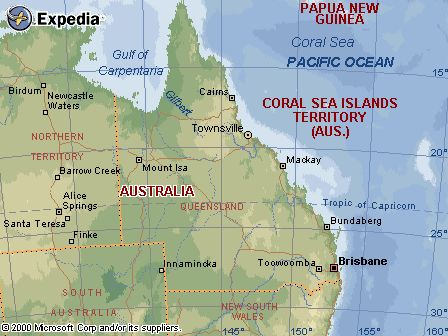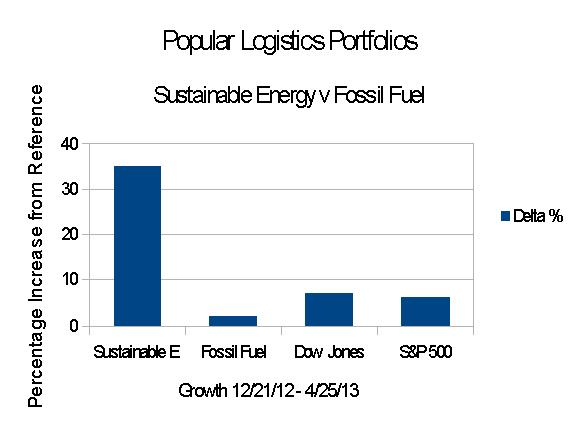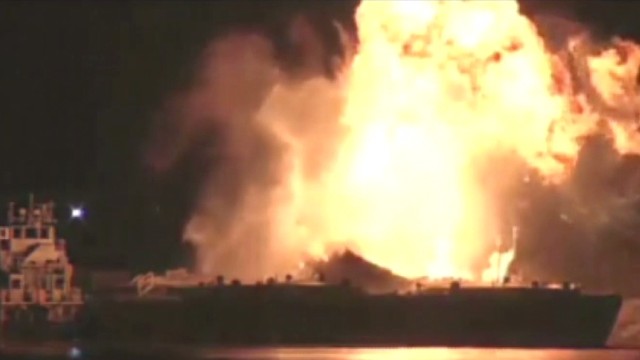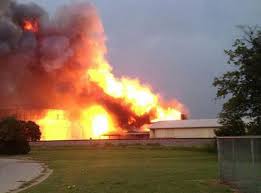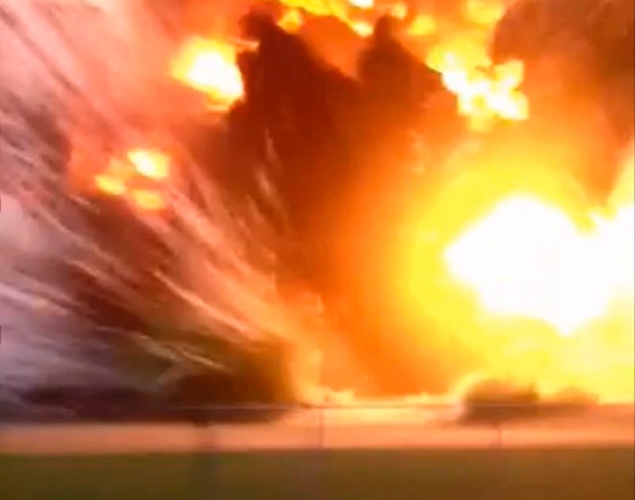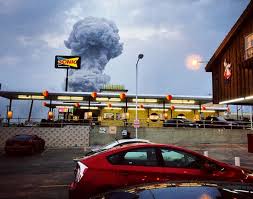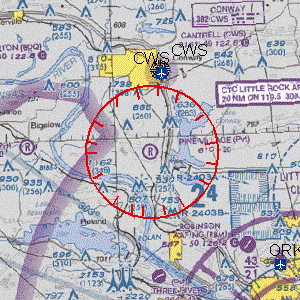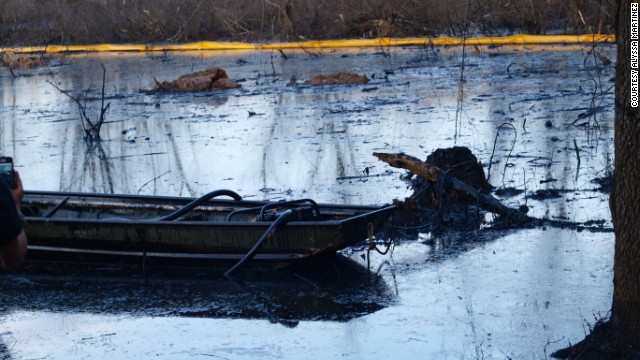Using a mounted (stationary) bicycle to generate electricity has been around for some time, as has using bicycles to power bicycle accessories, particularly lights. A new technology enables charging various devices while still using a bicycle for transportation. If this can evolve into a reliable means for charging communications devices and, say, flashlights, we’d have one more means of keeping things going during power failures.
The limits of network security: tension between convenience and safety
Long ago, 2000, and far away, in Australia, a malevolent hacker targeted the sewerage system. Courtesy of the site AssembleIt.Net, excerpted from Australia’s Hacked History
In April 2000 a man, Vitek Boden was arrested and charged with offences relating to the unlawful entry into Maroochy Shire Council’s sewerage system and environmental damage. His attack via wireless technology altered electronic data that led to malfunctions of the sewerage system. This caused a clean up cost of $13,110 and untold damage to the environment. The Crown’s case against Boden relied heavily on circumstantial evidence which exposed several areas for criticism for the defendant.
Earth Day, 2013. Oil Spills, Explosions, Fracking Business As Usual & The Stock Market Response
Wall St. NYC, April 26, 2013. Monday, April 22, 2013 was Earth Day. At the close of trading Thursday, April 25, 2013, as compared to my reference date of Dec. 21, 2012, the Dow Jones Industrials was up 12.3% , the S&P 500 closed up 10.84%, the “Popular Logistics Fossil Fuel Reference Portfolio was up 1.8% and the Popular Logistics Sustainable Energy portfolio was up 34.85%. (This is in line with the trend noted in my previous post, March 23, 2013., in the series that began Dec. 21, 2012.) And Shell Oil has temporarily suspended exploration and drilling operations in the Arctic. (Click here for Forbes). The stock portfolio data are summarized below, in Table 1. That’s the good news (unless you’re long on fossil fuels).
Here’s the bad news. “Fracking” is widespread and unregulated (click here). An oil spill dumped 500,000 gallons from Exxon pipeline onto Mayflower, Arkansas and into Lake Conway (click here). A fatal fire & explosion in West, Texas left 35 dead, probably including 16 firefighters and emergency responders (click here). A fire and multiple explosions on gasoline transport barges docked in Mobile, Alabama injured 3 (click here). Continue reading
Fuel Barges Explode – 3 Injured
As reported by Ed Payne, CNN, here, At least six explosions rocked two fuel barges carrying gasoline as they were docked on the Mobile River, in Mobile Alabama. All people are believed to be accounted for.Three people were taken to the USA Medical Center with burns. They remain in critical condition. The barges were being prepped for reload. The fires were monitored from a distance.
I wonder if authorities in Alabama chose to monitor the fires from a safe distance rather than risk the lives of emergency responders. Perhaps mindful of the 10 to 16 first responders killed in the fire and explosion at the West, Texas fertilizer plant last week (my coverage is here).
Thinking long term, we should be developing an efficient and sustainable energy infrastructure with fuel from kitchen waste, farm waste, and sewage.
If the Nega-Watt is the Least Expensive, Cleanest and Most Valuable unit of energy, and the Nega-Fuel-Watt is the 2nd Least Expensive, 2nd cleanest and 2nd Most Valuable, then the “Fuel-From-Waste-Watt” is the 3rd Least Expensive, 3rd Cleanest and 3rd Most Valuable unit of energy.
—
A candidate for General Assembly to represent NJ Legislative District 12, and an analyst with Popular Logistics, Lawrence J. Furman holds a Bachelor’s in Biology, and an MBA in “Managing for Sustainability” from Marlboro College, Vermont. He also has experience in information technology. He can be reached at ‘Larry” at Furman For New Jersey. com
Earth Day 2013, Furman for Assembly, NJ LD 12
Manalapan, NJ, Earth Day, 2013. I am campaigning to represent New Jersey’s Legislative District 12 in the General Assembly, April 22, 2013, Monmouth Battleground State Park, 6:00 AM. On YouTube.
On Earth Day, 1970, I was working to clean up a beach.
Today, Earth Day, 2013, I am working to clean up the economy.
Both require teamwork.
I’m standing here at Monmouth Battleground State Park – where Washington won a decisive battle against the British – ready to launch a battle against our competitors in other countries. Continue reading
Lindsey Graham, Peter King, Michael McCaul Blame FBI for Boston Bombing. Graham Backtracks
National Incident Map – quick visual overview
NationalIncidentMap.com has, using a mix of feeds and twitter posts from volunteers, created constantly updated maps, focused on several types of risk with a time-frame of the previous 24 hours. It’s not exhaustive, but it’s a good demonstration of what’s possible with crowdsourcing and aggregation. We’re not sure this could be comprehensive and complete without at least some full-time staff – but it’s still useful. There are also links to the same data in list form, and each incident market includes some data about the incident which it represents.
[imagebrowser id=108]
National Incident Map is also looking for more volunteers; their pitch, from their welcome page, appears below:
National Incident Map – quick visual overview
DebateGraph.org: visualization and collaboration tools
Debategraph is a software tool with applications for addressing, defining and attacking many types of problems in many ways. Here’s one of their interactive maps on epidemiology:
Who’s using it? Apparently the White House, CNN, the Prime Minister and the Foreign Office in the United Kingdom. A concept map explaining DebateGraph itself appears below.
Everything You Need To Know About Ricin, The Poison Mailed To President Obama | Popular Science
Everything You Need To Know About Ricin, The Poison Mailed To President ObamaRicin is one of the most poisonous substances on Earth, its scarily easy to make, and somebody is mailing it to the President and at least one U.S. senator. What it is, how it works, and more, inside.By Dan Nosowitz
via Everything You Need To Know About Ricin, The Poison Mailed To President Obama | Popular Science.
35 Dead in Fire and Explosion at Texas Fertilizer Warehouse. Others Missing.
West, Texas. April 18, 2013. An explosion during a fire at a fertilizer plant in West, Texas killed 35, including at least 10 firefighters and EMS responders. At this time, 6 other EMS responders are missing. If not found alive, and the outlook appears grim, the death toll will jump to 41, including at least 16 First Responders. This is a devastating loss of first responders in a community of 2600 and a tragic loss to the families and friends of those killed. 160 people were injured, according to CNN, here.
This news clip, from CBS, reports, “The explosion, with the force of a small earthquake, was felt 15 miles away. The blast knocked out windows half-a-mile away.”
West Fertilizer Company may have been negligent – that’s for the courts to decide.Ricardo Lopez, writing in the LA Times, reported, “West Fertilizer Co. paid $5,250 last year to the U.S. Pipeline and Hazardous Materials Safety Administration, PHMSA, over violations discovered in 2011.” CBS also reported that the last EPA inspection was 1985 and that West Fertilizer Co was fined in 2006 for failure to implement a disaster plan.
The Houston Chronicle, reported, here, that
- West Fertilizer was cited in 2006 for lacking a permit,
- An intermediate school near the plant has been evacuated “more than once” due to fumes and pollution from the plant,
- The plant had not been inspected by Occupational Health and Safety Administration, OSHA in more than 10 years,
- West Fertilizer, incorporated in Texas in May 2004, did not get its state air pollution permit until 2007 after a complaint was filed about foul odors from the facility.
The Chronicle, also reported, here, that Donald Adair, the owner of Adair Grain and West Fertilizer, issued a statement Friday afternoon expressing sympathy,
My heart is broken with grief for the tragic losses to so many families in our community. I know that everyone has been deeply affected by this incident. Loved ones have been injured or killed. Homes have been damaged or destroyed. Our hearts go out to everyone who has suffered.
I was devastated to learn that we lost one of our employees in the explosion. He bravely responded to the fire at the facility as a volunteer firefighter. I will never forget his bravery and his sacrifice, or that of his colleagues who rushed to the trouble.
The citizens of Texas and of the United States need to decide if the regulatory regimes are inadequate. Government safety regulations are like government regulations prohibiting drunk driving. Drunk drivers don’t mean to do any harm, they just want to get home after having a good time. Remember that canonical accounting rule: “Assets = Liabilities + Owners’ Equity.” Business owners want to make money selling valuable products, and just want to add a few dollars to “Owners’ Equity” perhaps by subtracting a few dollars from the category of “Safety & Emergency Preparedness” in the “Liabilities,” column.
Final questions:
If fertilizer is so explosive why is it good to use on our lawns and use it to grow our food? What alternatives are available?
Mr. Adair sounds like an alcoholic who has just learned that he has killed someone after driving while intoxicated and crashing into another car. If we prosecute drunk drivers for killing by accident while under the influence, or creating what Justice Holmes called “A clear and present danger,” shouldn’t we prosecute owners of corporations for killing by accident, or creating a clear and present danger, especially when, as appears to be the case here, there is a pattern of disregard for regulation?
The staff, budgets, and authority of regulatory and enforcement agencies such as PHMSA, OSHA, and the EPA have been cut under the administrations of President George W. Bush and by the House of Representatives under the leadership of John Boehner. Should we continue to cut the staff and budgets of PHMSA, OSHA, EPA and other regulatory and enforcement agencies or should we rethink our approach to law enforcement and regulation?
Exxon Manages No-Fly Zone Over Arkansas Oil Spill
An Exxon pipe leaked, flooding 500,000 gallons of crude oil onto Mayflower, Arkansas. Exxon is in charge of a No Fly Zone in the vicinity of the spill.
- Do independent observers who want to witness the tar sands spill disaster have to ask Exxon’s permission?
- Why Is Exxon Controlling the No-Fly Zone Over Arkansas Tar Sands Spill?
- Because it wants to? Because it can?
Because … the FAA put an Exxon employee in charge of a no-fly zone over Exxon’s latest oil spill.
Contact the FAA at (866) 835-5322 and the White House at (202) 456-1111 to ask Why is an oil company managing a no-fly-zone over an oil spill it caused? Why is a publicly traded for-profit oil company that caused an oil spill managing air traffic in the vicinity of the oil spill?
Mayflower Oil Spill – Economic Externalities
Back in the mid-1970’s, Amory Lovins, currently with the Rocky Mountain Institute, said “The cheapest unit of energy is the one you don’t need to buy.” He called this the “Nega-Watt.” We now know that the Nega-Watt is also the cleanest unit of energy. And the second cheapest – and second cleanest – is the one which doesn’t need fuel and doesn’t create waste, which might be called the “Nega-Fuel-Watt” or “Nega-Waste-Watt.”
Edward McAllister, reported in Reuters, covered by Yahoo News,
Warren Andrews had just finished putting up balloons for his stepdaughter’s 18th birthday party at their suburban home in Mayflower, Arkansas, when his wife came inside and said something was wrong.
After stepping out of his house, and taking one glance, he immediately dialed 911.
“I don’t know what’s going on, but I’ve got a river of oil coming down the street at me,” Andrews told the operator.
Five minutes later, the slick of noxious black crude spewing from a ruptured Exxon Mobil pipeline was eight feet wide, six inches deep and growing fast.
We now know that an Exxon Mobil pipeline, like the proposed Keystone Pipeline, carrying Canadian crude oil ruptured on Friday, March 29, 2913, spilling an estimated 500,000 gallons of oil into the grounds of the town. 500,000 gallons is roughly 11,000 barrels.
Inspiring aspirations – preamble of the founding charter of the United Nationa
We – me, certainly – think of myself as relatively immune to surprise, by evil or good. People say that it’s in the New York City Charter, right next to the rule about not being nice to tourists, lest we lose our municipal reputation for poor manners and indifference. But the right words still can, and should, have the power to move us – and founding documents often contain evidence of the best and worst of society. The United States Constitution, for example, was structured around giving slave-holding states a disproportionate amount of power (because of the Three-Fifths Compromise, and the undemocratic Senate, in which representation is distinctly undemocratic. Within the slave states, of course, individual slave-owners were free to treat their slaves as they wished, extracting as much economic value as was possible. And so among slave owners the economic incentive was a “race to the bottom.” ((We had thought that the phrase originated with Adam Smith, but further research suggests that first use may have been by Justice Louis Brandeis in Ligget Co. v. Lee (288 U.S. 517, 558–559) (1933). )) Yet, other parts of the body of the Constitution and Bill of rights bespeak noble and compassionate aims. And the absence of even a single use of the words “slave” or “slavery” are testimony that at least some of the Framers were opposed to, ashamed of, slavery.
And so with the United Nations: we can all bring to mind easily events in which the United Nations’ conduct – and even more often, cowardly inaction and silence doesn’t mean its existence hasn’t affirmatively led to good outcomes, and by creating channels for communication and temp0rizing – the latter being essential if the casus belli is in some part a politician with a bruised ego.
It is in this context that we present to you the Preamble of the founding Charter of the United Nations. It’s notable for many reasons but we think it worth pointing out that you can read this entire block of text from top to bottom, including the headings, or, you can read all the body copy as one statement, and read all of the headings, without reference to the text beneath each heading, as a separate complementary statement. Here it is:
PREAMBLE
WE THE PEOPLES OF THE UNITED NATIONS DETERMINED
- to save succeeding generations from the scourge of war, which twice in our lifetime has brought untold sorrow to mankind, and
- to reaffirm faith in fundamental human rights, in the dignity and worth of the human person, in the equal rights of men and women and of nations large and small, and
- to establish conditions under which justice and respect for the obligations arising from treaties and other sources of international law can be maintained, and
- to promote social progress and better standards of life in larger freedom,
AND FOR THESE ENDS
- to practice tolerance and live together in peace with one another as good neighbours, and
- to unite our strength to maintain international peace and security, and
- to ensure, by the acceptance of principles and the institution of methods, that armed force shall not be used, save in the common interest, and
- to employ international machinery for the promotion of the economic and social advancement of all peoples,
HAVE RESOLVED TO COMBINE OUR EFFORTS TO ACCOMPLISH THESE AIMS
Accordingly, our respective Governments, through representatives assembled in the city of San Francisco, who have exhibited their full powers found to be in good and due form, have agreed to the present Charter of the United Nations and do hereby establish an international organization to be known as the United Nations.
You can read the Preamble – and the nineteen chapters of the Charter – here on the site of the United Nations. And, if you think that world peace, social justice and economic fairness are worth discussing ((No sarcasm intended; thanere are people who believe, for instance, that we should let markets sort things for us, that collective efforts to improve things will only make things worse; those aren’t unreasonable positions, even if we don’t share them. The latter proposition is merely an application of Murphy’s Law to global matters. )), consider the proposition that a global language would be an affirmative step. We think it’s worth considering, even if it’s a limited language, and we don’t think the discussion begins or ends with Esperanto, and in fact even a limited vocabulary in a signed language, spoken by even a small number – say 2% – of each country’s population.
Brett Zamir, the brilliant creator of, among other things, at least 11 Firefox extensions – is owed our thanks for inspiring this post, is an advocate of the universal-language premise and an advocate of Gestuno, also known as International Sign. Brett, with permission “from the World Federation of the Deaf, [has] put online an early book on Gestuno,”
And if you’ve now got an appetite for founding documents, the Universal Declaration of Human Rights is a must-read.
Charles Komanoff
Charles Komanoff is widely known for his work as an energy-policy analyst, transport economist and environmental activist in New York City. He “re-founded” NYC’s bike-advocacy group Transportation Alternatives in the 1980s, co-founded the pedestrian-rights group Right Of Way in the 1990s, and wrote or edited the landmark reports Subsidies for Traffic, The Bicycle Blueprint, and Killed By Automobile. Earlier, Komanoff gained prominence for deconstructing the disastrous economics of nuclear power in the United States as author-researcher and expert witness for states and municipalities across the U.S. He wrote his visionary oil-saving report, Ending The Oil Age, after witnessing at close range the traumatic events of 9/11. Komanoff’s current work includes modeling and advocacy for traffic pricing and free transit in New York City in partnership with renowned civic activist Ted Kheel. He also directs the Carbon Tax Center, a clearinghouse for information, research and advocacy on behalf of revenue-neutral carbon taxes to address the climate crisis. A math-and-economics graduate of Harvard, Komanoff lives with his wife and two sons in lower Manhattan.11 Hanover Square21st FloorNYC 10005kea@igc.org
via Charles Komanoff.

